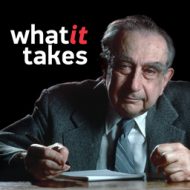If I claim credit for anything, I should not claim credit for knowledge, but for courage.
Edward Teller was born into an affluent, educated Jewish family in Budapest, Hungary. As one of the great cities of the Austro-Hungarian Empire, Budapest was part of a larger central European world of predominantly German language and culture. Edward was only ten when the First World War brought an end to the Empire and Hungary became independent for the first time in centuries.
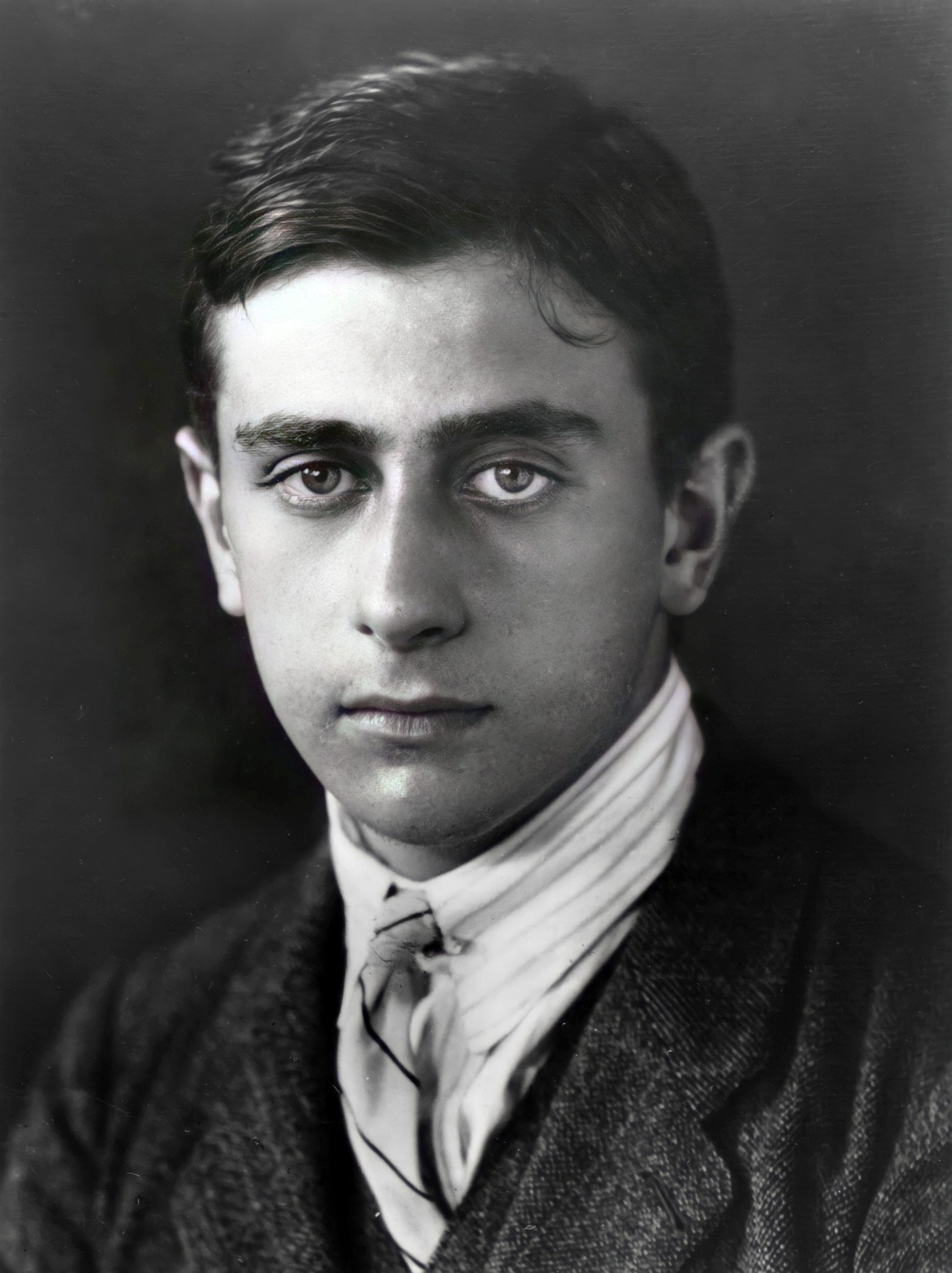
Young Edward was a mathematical prodigy, educated in private schools, but his education was frequently disrupted by the political turmoil engulfing the new nation. In 1926, Edward left Budapest to study chemical engineering in Karlsruhe, Germany. In Karlsruhe, Teller became intrigued by physics, particularly the new theory of quantum mechanics. The young chemical engineer transferred to the University of Munich in 1928 to pursue this interest. In Munich, disaster struck. A streetcar accident cost Teller his right foot.
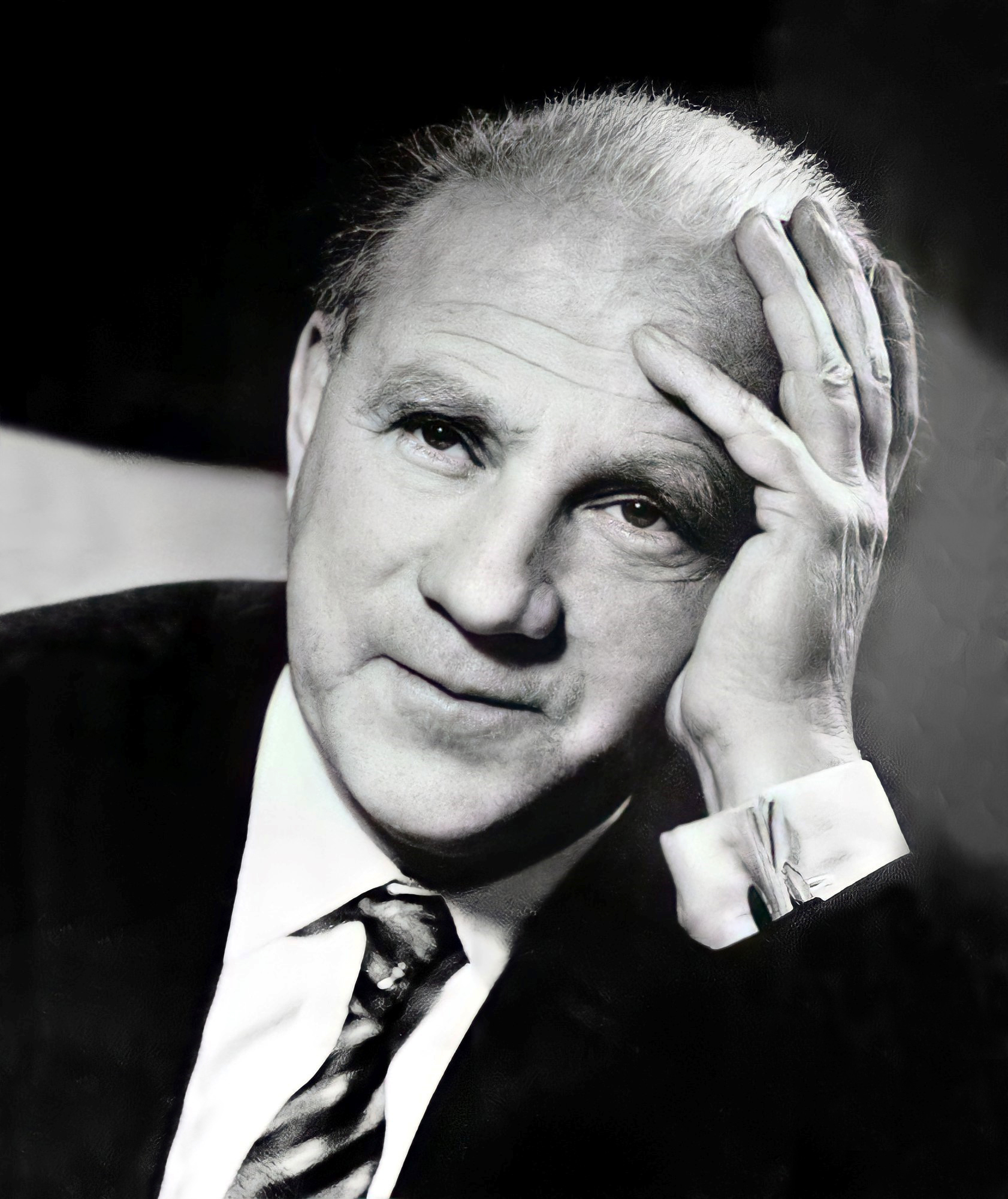
Once Teller had recovered from his injury and learned to walk with a prosthesis, he transferred to the University of Leipzig to study with Werner Heisenberg, who was in the forefront of the new physics. Teller received his doctorate in physics in 1930 and took a job as research consultant at the University of Göttingen. His first published paper, “Hydrogen Molecular Ion,” was one of the earliest statements of what is still the most widely held view of the molecule. Teller might have settled down to a long, productive career in Germany, but again political events intervened. Adolf Hitler came to power in Germany and Teller knew immediately that there was no future for him in Germany. With the help of the tight-knit community of advanced physicists, Teller was able to emigrate to Denmark in 1934. There he joined the Institute for Theoretical Physics, where the great Niels Bohr led a team of young scientists attempting to unlock the secrets of the atom. In this year, Teller married Augusta Harkanyi, a marriage that weathered half a century of expatriation and controversy.
At Bohr’s institute, Teller met the Russian physicist George Gamow, also a political refugee. After a year, Gamow and Teller went their separate ways. Gamow headed for George Washington University in Washington, D.C., while Teller headed for England. He worked briefly at the University of London, but within a year received an invitation to join Gamow in Washington. Teller gratefully accepted the offer and entered the United States in 1935; he became a naturalized U.S. citizen in 1941.
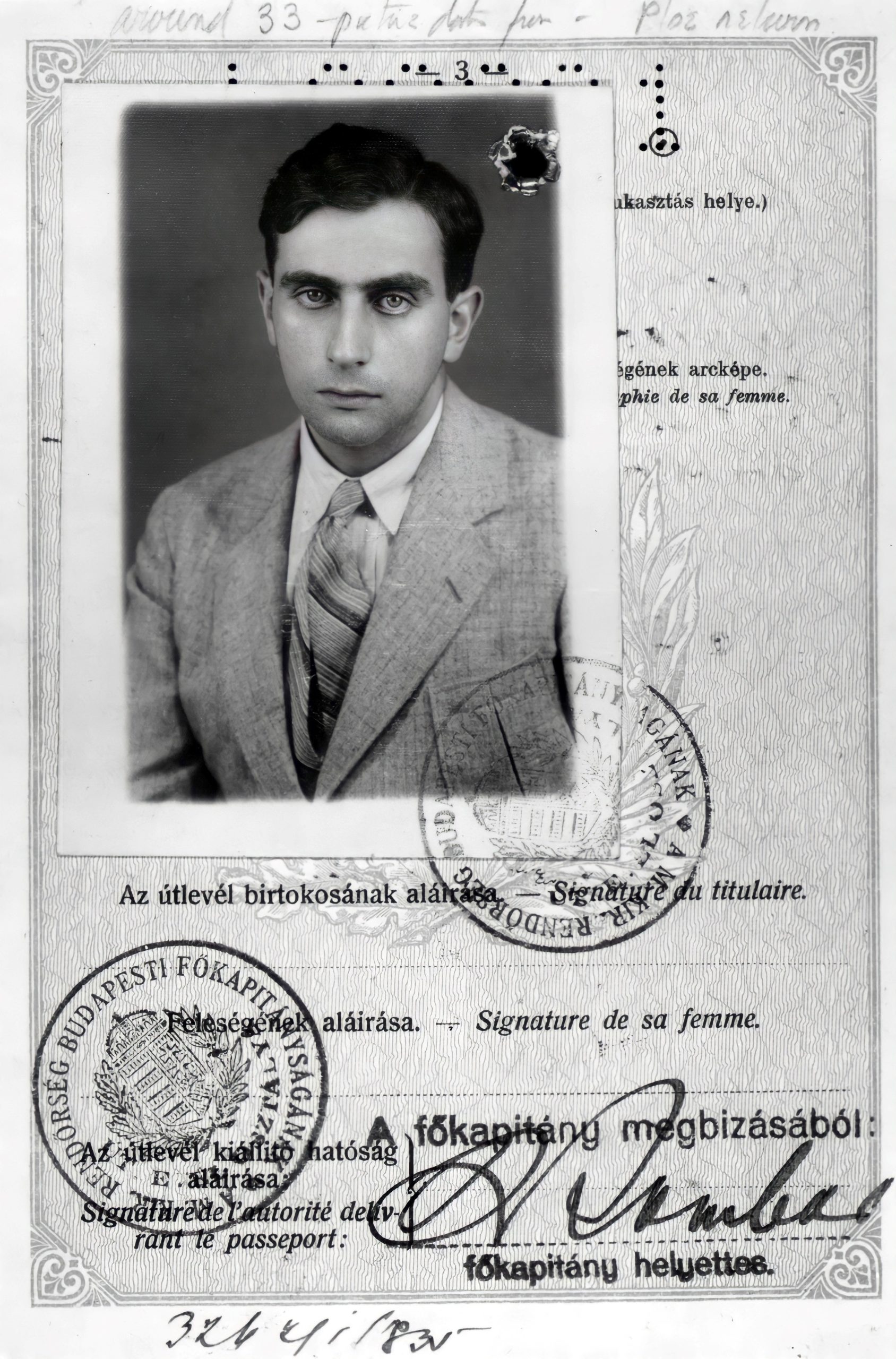
In Washington, Teller and Gamow worked together closely, formulating the so-called Gamow-Teller rules for classifying subatomic particle behavior in radioactive decay. They also attempted to apply the new understanding of atomic phenomena to astrophysics. Teller had settled down to what he hoped would be a quiet academic life, but events in Europe intervened again.
The development of nuclear physics had continued at a slower pace in Hitler’s Germany, but by 1939, German scientists had discovered nuclear fission. It was theoretically possible to split the atom, releasing energy as heat. It appeared to Teller and the other refugee physicists that the most destructive force ever known to man might fall into the hands of Adolf Hitler. Their fear was amplified by the knowledge that the German nuclear program was led by Heisenberg himself.
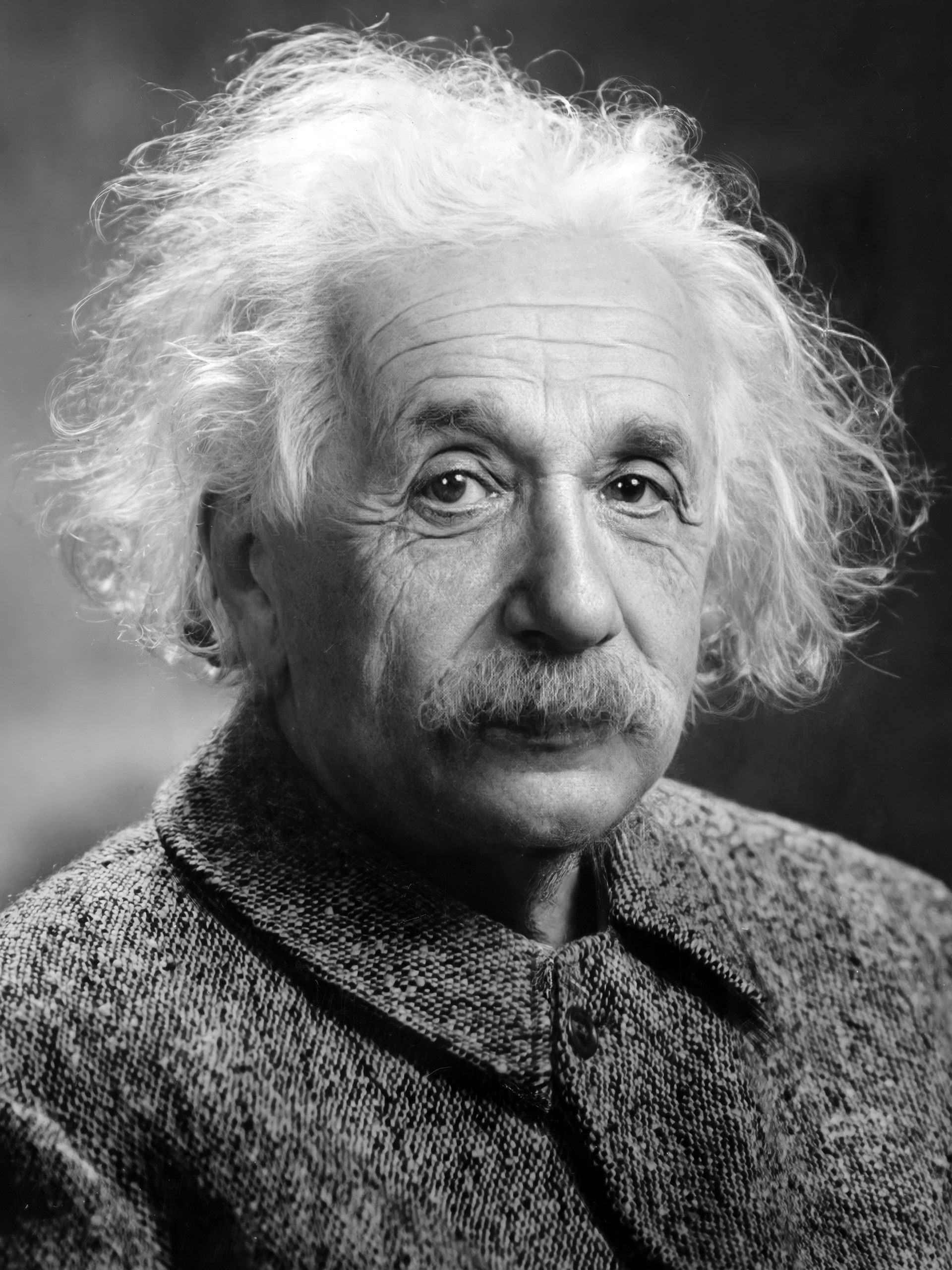
Teller’s friend Leo Szilard enlisted Albert Einstein to bring this danger to the attention of President Franklin Roosevelt. Roosevelt appealed to the scientific community to mobilize for the defense of freedom. In 1941 Teller joined America’s best physicists in the top-secret Manhattan Project. Their mission: to develop the atom bomb before the Germans did.
After preliminary work in Chicago with Enrico Fermi, and in Berkeley with J. Robert Oppenheimer, Teller moved to the isolated laboratory at Los Alamos, New Mexico. Here, under Oppenheimer’s leadership, the first atomic bomb would be built.

As early as 1940, Teller had considered the possibility of using the intense heat generated by nuclear fission to trigger the process called nuclear fusion, an even more explosive phenomenon. Teller hoped that both the fission and fusion options would be pursued at Los Alamos, but building the simpler fission device alone proved so complicated that fusion research was abandoned. Teller was deeply disappointed.
Edward Teller made a major contribution to the development of the atomic bomb. From the beginning, some scientists had feared that an uncontrolled nuclear reaction, like that of the proposed bomb, might continue indefinitely, consuming the earth. Teller’s calculations reassured the team that the nuclear explosion, while enormously powerful, would only destroy a limited area.
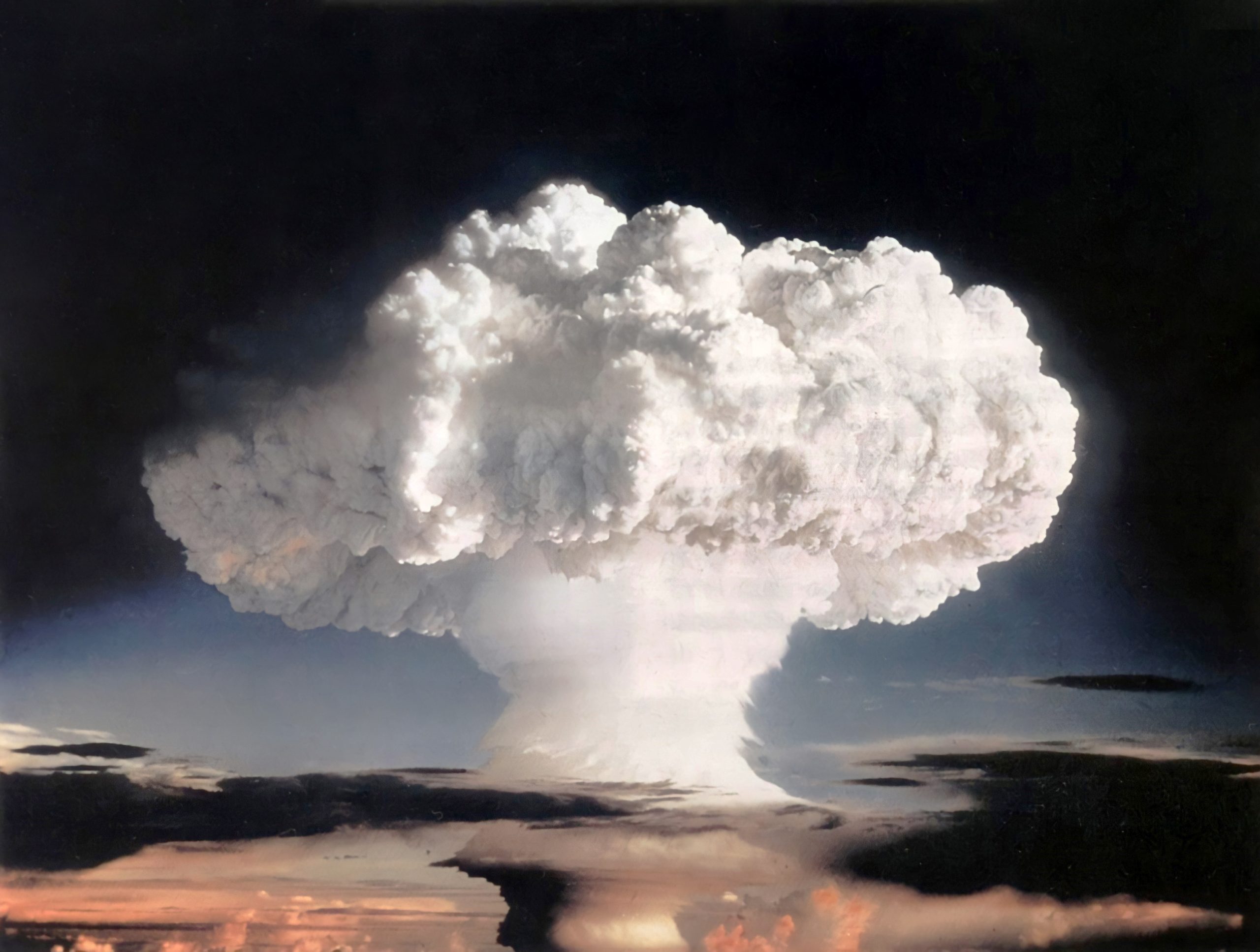
In 1945 the atom bomb was successfully tested at Alamogordo, New Mexico. The German project was nowhere near completion when Germany surrendered. Within weeks of the first test, America’s bombs had destroyed the Japanese cities of Hiroshima and Nagasaki. Japan surrendered and the war was over. Once the war was over, Teller tried again, without success, to persuade his superiors at Los Alamos to pursue fusion and create a thermonuclear weapon vastly more powerful than the bombs dropped on Japan.
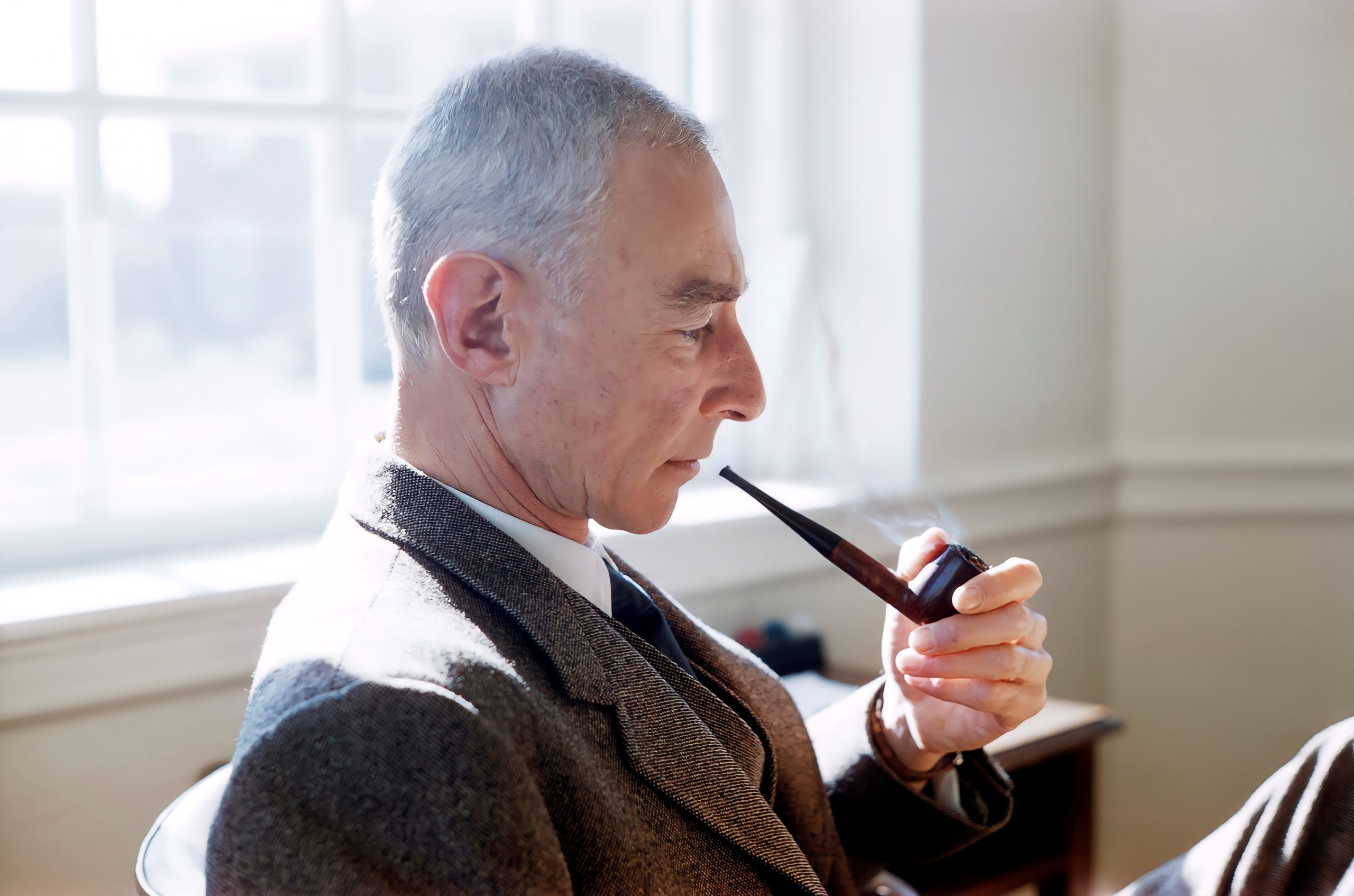
When the Russians detonated their own atomic bomb, President Harry S. Truman ordered the Los Alamos lab to develop a fusion weapon. In 1952, the first hydrogen bomb was successfully detonated on Eniwetok Atoll in the Pacific Ocean. Teller felt vindicated, but Oppenheimer and many of the Manhattan Project veterans had opposed the plan. A deep and bitter rift developed between two factions of atomic scientists.
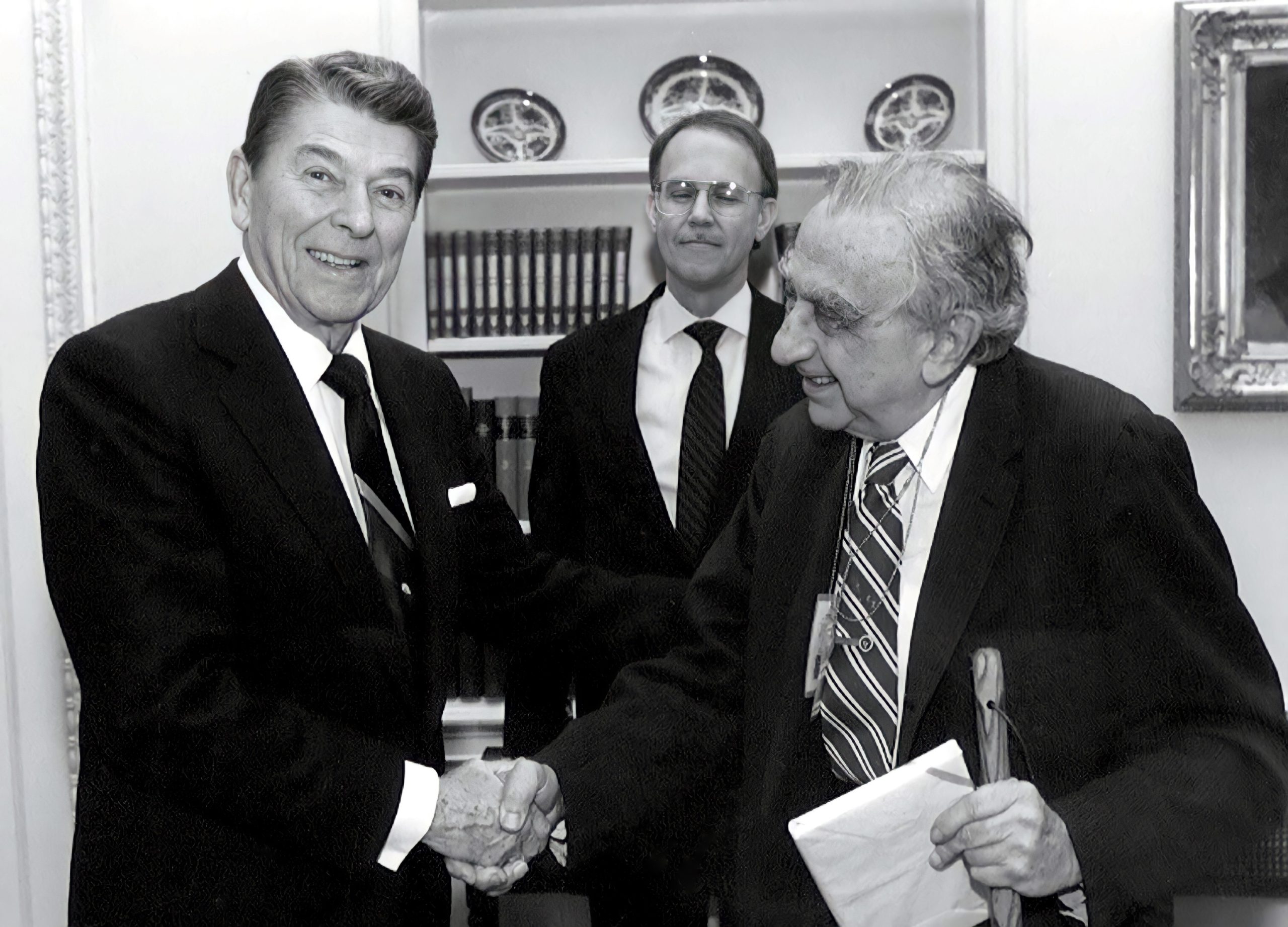
Teller believed the scientists at Los Alamos were too ambivalent about developing the next generation of nuclear weapons, and that an independent facility was needed. He lobbied Congress and the armed services vigorously for the establishment of a second laboratory for thermonuclear research. The Atomic Energy Commission responded by establishing the Lawrence Livermore Laboratory in northern California. Teller served in succession as consultant, associate director and finally director of the Livermore lab.
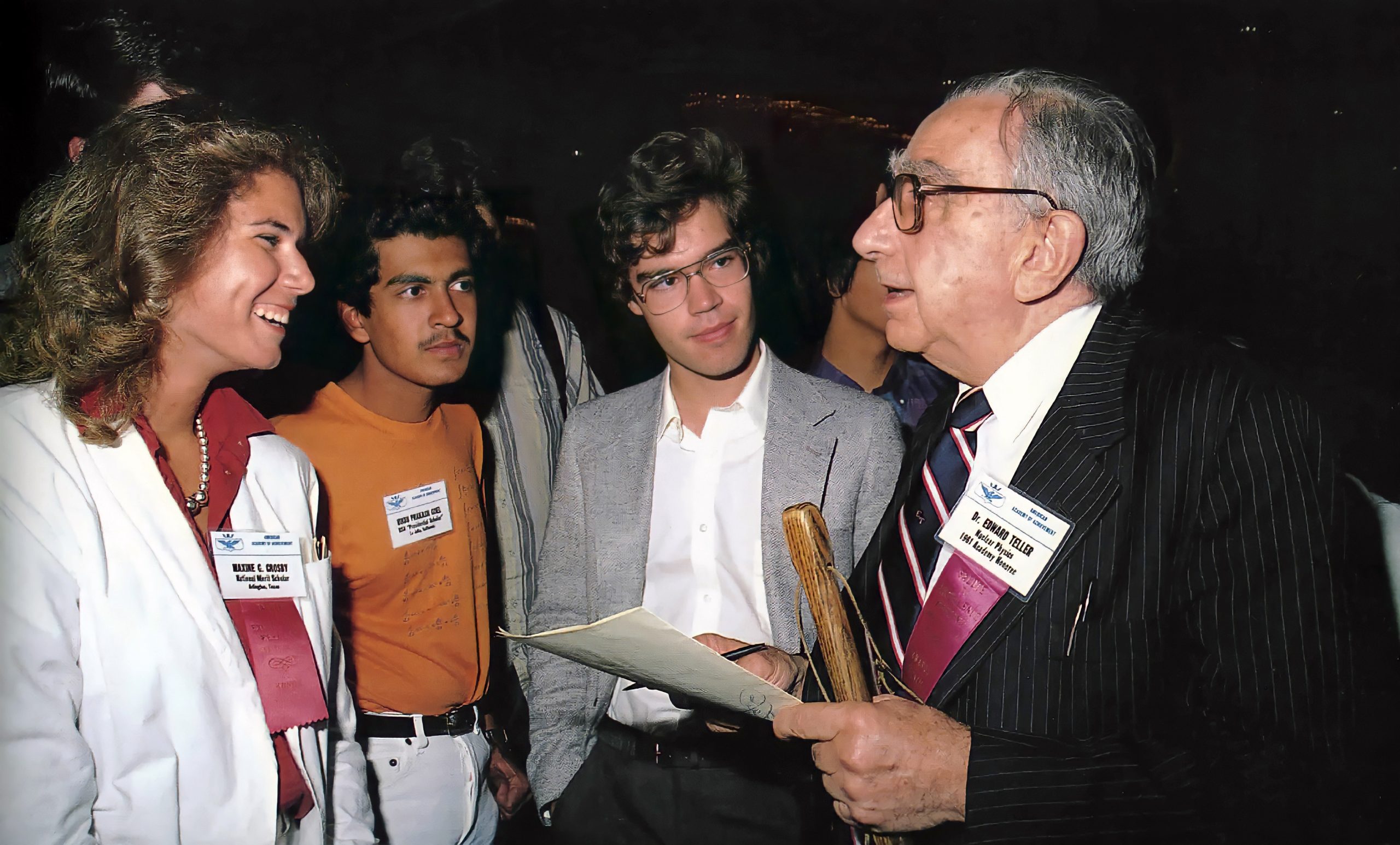
A deeper antagonism between Teller and many of his former colleagues developed when J. Robert Oppenheimer was accused of disloyalty on the basis of some past associations. Teller made no accusations himself, but when Oppenheimer’s security clearance was revoked, many of his friends blamed Teller.

Over the years, Teller continued to advocate a strong national defense. He made headlines in the 1970s, promoting the development of nuclear fusion as an alternative to other sources of energy, and again in the 1980s, testifying in favor of the strategic missile defense system. He was the author of over a dozen books, mostly dealing with nuclear energy and defense issues. From 1975, Edward Teller was a senior research fellow at the Hoover Institute for the Study of War, Revolution and Peace at Stanford University in Palo Alto, California. He died at his home on the University campus at the age of 95.
1990: Dr. Edward Teller plays a Beethoven sonata at his home on Stanford’s campus.

“I believe that there are periods in the intellectual development of the world which are particularly great. They are confined to periods not very long and to places not very extensive. That, in modern science, was something that occurred in central Europe.”
What occurred in central Europe in the first decades of this century was a revolution in man’s understanding of the universe. The breakthrough in physics is associated with a few extraordinary minds: Albert Einstein, Niels Bohr, Werner Heisenberg. One who knew and worked with them, and was at the very heart of this ferment, was Edward Teller.
Under Heisenberg at Leipzig, he helped lay the foundation of nuclear physics. His research with Enrico Fermi at the University of Chicago led to the first controlled nuclear reaction. At Los Alamos with J. Robert Oppenheimer, Teller assisted the development of the first atomic bomb. At the height of the Cold War, he led the drive to develop the hydrogen bomb and waged a tireless struggle to establish the Lawrence Livermore Laboratory for thermonuclear research.
Through his ninth decade, he remained an ardent proponent of nuclear fusion and strategic missile defense. As one of the great pioneers of modern physics, and as a strenuous advocate for America’s national security, Edward Teller made his mark on our times in a way that few could equal. Although his passionate convictions often brought him into conflict with his fellow scientists, his old friend, the Nobel Prize-winner Eugene Wigner, called him “one of the most thoughtful statesmen of science.”
You were there, at the Trinity site in New Mexico, when the first atomic bomb was tested. If you could take us back to that morning of July 16, 1945, what were you thinking? What did you feel when the bomb went off?
Edward Teller: We had a countdown that stopped — where I was, ten miles from point zero — at minus 30 seconds. Then silence. A long time. I was sure it misfired. I was lying on the ground as instructed, looking at it — not as instructed — (wearing) heavy welding glass. And then, at the right time — or, I thought it was too late — it was early in the morning, quite dark — a very weak amount of light. I remember clearly, in the first second, my thought was, “Is this all?” Then I remembered I had this heavy welding glass on, and gloves, so no light could enter. So when this light — maybe in two seconds — started to fade, I tipped my hand and looked down at the sand. And you know, it was as though I had removed a curtain and bright sunlight came in. Then I was impressed. Then I saw the brilliant flash. Not looking at it, but looking at the sand next to me. And of course we all were very much aware of the point that, in a few weeks, this would not be just an experiment. And some of us, including me, did have real doubts whether this should be used without first demonstrating it.
What we did in Los Alamos is to make sure that the United States would be the first to do something with this new power. We feared it would be the Nazis. But because of our efforts — and I believe in part because of Heisenberg’s reluctance, in part because of the lack of strength in Germany — that fortunately did not happen. But we know that a great Soviet scientist, Kurchatov, had made great progress on the atomic bomb. And when our success made it clear that all this was possible, it took the Soviets, who in many other respects were much more slow, only four more years to catch up with us. What we did in Los Alamos, in fact, was make sure that the United States, rather than the Soviet Union, would have the first words to say in the atomic age. And there I think is an influence that we really did exercise, and it is very clear that what we did is something that had to be done.

Talking about that moment, your fellow scientist, J. Robert Oppenheimer, who had led the project to build the bomb, quoted the Bhagavad-Gita: “I am become death, the destroyer of worlds.” Does that capture the moment for you? How do you feel about that?
Edward Teller: I was, of course, very much impressed.
The feeling strongest in me at the time was one of worry. What will happen when this is used in earnest? To my mind, the quote from Oppenheimer is a remarkable example of the conceit of scientists, the idea that they create something new, the lack of recognition that all they do is find something that is already there. To discover is enough. To claim to be the source of something new, or imply it in any way is, I think, very thoroughly wrong.

When Hitler came to power, you knew you would have to leave Germany. How did you get out? So many wanted to leave but had no place to go.
Edward Teller: The physicists in the world worked together very effectively, and those of us who wanted to leave had an easy possibility to do so. I arrived in London in the fall of 1934. There was a meeting at which the great nuclear physicist Lord Rutherford talked. What about? Nuclear energy. “Complete nonsense!” he said. “Nuclear questions are pure physics, they can never have any practical application.” Within a few weeks, I found out the reason for Rutherford’s passion.
I had met Leo Szilard many years before in Budapest. In London, he came to me and told me he had worked with the recently discovered neutrons. Since they have no charge, they can approach a nucleus, which no other nucleus can do. Thus, you might cause reactions in that nucleus that produces two neutrons. If that could be done, then nuclear energy could be used on a big scale. He had been to see Rutherford, and Rutherford threw him out. Rutherford did not calm down in the next few weeks. Neither did Szilard. He continued to work and to think of this possibility, four years before fission was discovered.
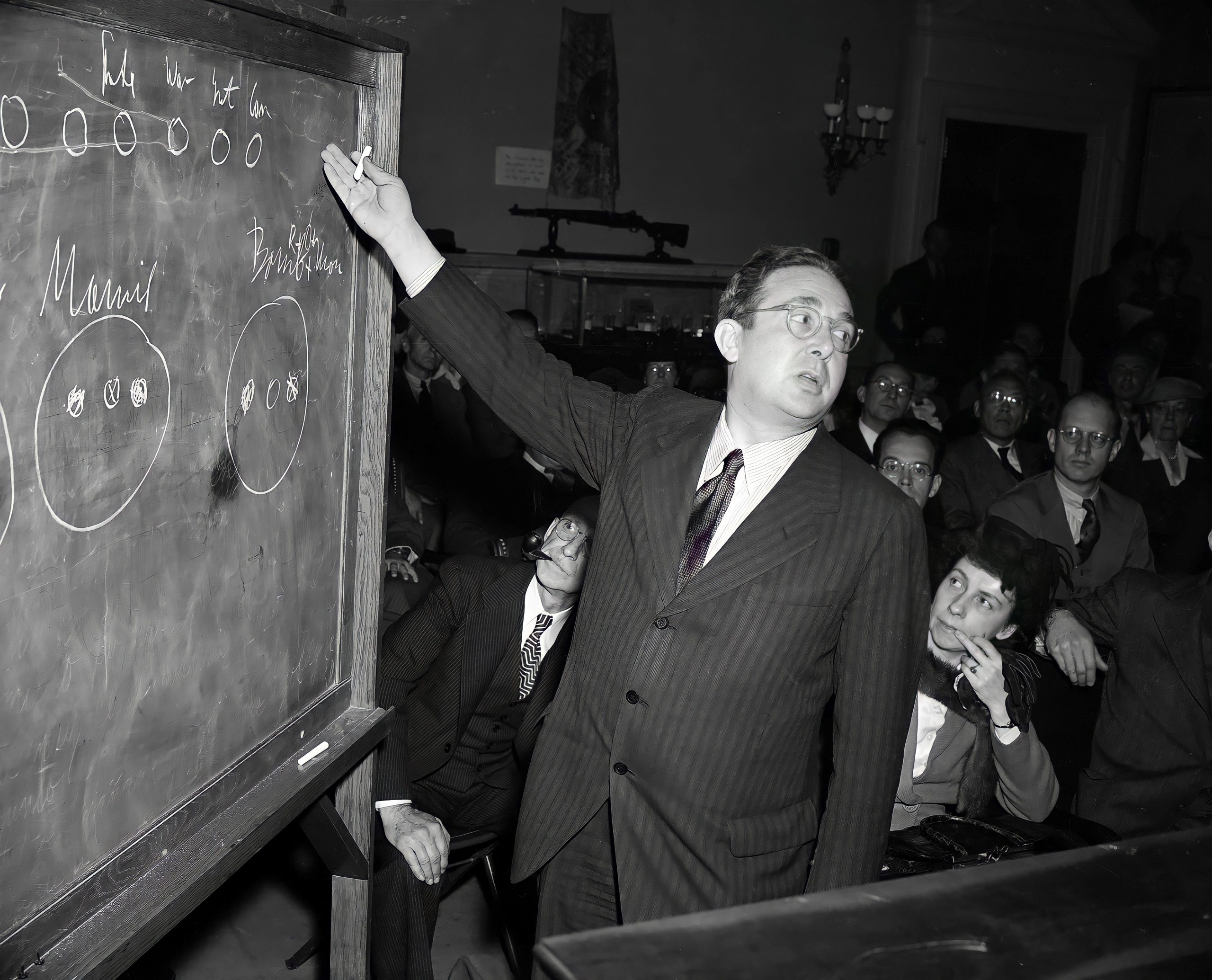
In the meantime, I got an invitation to come to the United States to work with a very wonderful Russian who had escaped from the Soviet Union, George Gamow. I worked at George Washington University, working out consequences of the new atomic theory, and had a really wonderful time. In many ways, that should have been the end of my career. Except, in January 1939, we had our usual interesting annual conference at George Washington University, to which George Gamow invited me along, and Szilard arrived with the news about the discovery of fission. It was big news.
We had a busy conference. And my wife and I got very tired by the end of the conference. But no sooner did we start to relax — let’s say 15 minutes after — there was a telephone call, and my friend Leo Szilard was on the other end. “I am at the Union Station, come and get me.” Well, Szilard was perhaps the last — or one of the last — men who had a great influence on me. That is, a great positive influence. No one could have had a greater influence on me than Hitler, who made it entirely clear to me that one could not ignore politics, and very particularly one could not ignore the worst evils in politics. What Szilard wanted was to say, “Here is what I have been waiting for! Here is what I have told you in London years ago: fission. Maybe in fission, when a big nucleus — the biggest, uranium — splits into two pieces, perhaps this fission, caused by one neutron, will emit two neutrons and then nuclear explosions will become possible.” It made sense. And a few weeks later, there was Szilard on the phone calling in from New York. “I have found the neutrons!”
By that time, I knew that what Rutherford called nonsense was actually a hard reality. And the possibility that Hitler would get there first was entirely reality, because fission actually was discovered in Berlin in the Kaiser Wilhelm Institute. Szilard was the most persistent in pursuing this subject. Others tried and there was no interest in our government, at least in the lower circles any one of us could get to. But Szilard had imagination and — as far as I ever could discover — no inhibitions.
That summer, I was teaching at Columbia and Szilard came to me one day. “Can you drive me out to the end of Long Island to see Einstein?” You know, Szilard was very ingenious and could do anything except drive a car. And furthermore, he had false hopes that I would be a good driver. At any rate, I got him to Einstein. He invited us to a cup of tea, and Szilard took a letter out of his pocket, and Einstein read it carefully and signed it, and made one relevant remark. “This is the first time,” he said, “we would get energy directly from the atomic nucleus, rather than from the sun, which got it from the atomic nucleus.” He handed the letter back to Szilard, and that was the second of August. The rest is known to everybody. I had played my essential role as Szilard’s chauffeur. Szilard gave the letter to an acquaintance of his who knew the President — who knew Roosevelt. The letter was signed on the second of August, a little more than four weeks before Hitler invaded Poland. The delivery of the letter was slow, but it got there, circumventing any interference by secretaries. And FDR saw it, end of October, after Hitler and Stalin defeated — and divided between themselves — Poland. The letter said the science is there. Nuclear explosives can be made, and the Germans were the first to know about it, they discovered it. I cannot think of a time where such a letter could have made more of an impact on Roosevelt than the time when he actually got it. He immediately issued orders and we got going.
So after Roosevelt read Einstein’s letter and gave the go-ahead for the Manhattan Project to develop the atom bomb, did you become involved immediately?
Edward Teller: I didn’t. I liked what I was doing much too well. My good friend Szilard was in it. So was a mutual friend, Eugene Wigner.
I got an invitation to a Pan-American Congress — to which I was determined not to go — in Washington, next door. And Roosevelt was going to speak and I still was not going. But the day before his speech, Hitler invaded the Lowlands and it was very clear that the decisions in the World War were now immediately impending. And Roosevelt was going to speak about that, so I was going. The first and only time that I saw Roosevelt, and that was from a distance. He talked about the fact that the time to fly from Europe to the American continent was not so great, that small nations are not secure, neither are big ones, that the scientists may be blamed for the horrible things that are happening. “But,” said Roosevelt, “I am a pacifist, and you, my friends, are pacifists, but I am telling you, if you are not going to work on the instruments of war, freedom will be lost everywhere.” That was the question on my mind. And I had the impression that Roosevelt was talking to me. And of course that was stupid to think so — me of 2,000 people — but yes, me. Because, of a couple of thousand people present, it may have been he and I and none other who knew about the possibility of the atomic bomb. I read the letter that he read, and I knew the actions that he had already taken to start work on nuclear explosives. When he finished talking, my mind was made up. And I remember looking at my watch; he had talked 20 minutes.

Not much later, I found myself in New York, and later in Chicago, where Szilard and John Wheeler were working on the nuclear reactors. Then to Los Alamos, and then the decisive work came when my good friend Johnny von Neumann visited, and the discussion between him and me led to the proposal of implosion. Pushing materials — uranium — together, with the power of an explosive behind it, can result in as much as double the usual density of uranium, which, for a number of not very difficult reasons will make the production of nuclear explosives possible in the earlier future.
This, in the end, after the defeat of Hitler, led to the situation, in the spring of 1945, when it became clear that the nuclear explosives would be available. It was then that I had a letter from Leo Szilard, suggesting that the first nuclear explosive used in the war should be used for demonstration and not for actually hurting the enemy. I went with the proposal to Oppenheimer who said, definitely, “No.” Unfortunately, I took his advice, partly because it involved no action. I was very sorry about having taken his advice, particularly when I learned later that he — contrary to the statement that we physicists should stay away from such decisions — has explicitly advocated the earliest possible use of the explosive.

